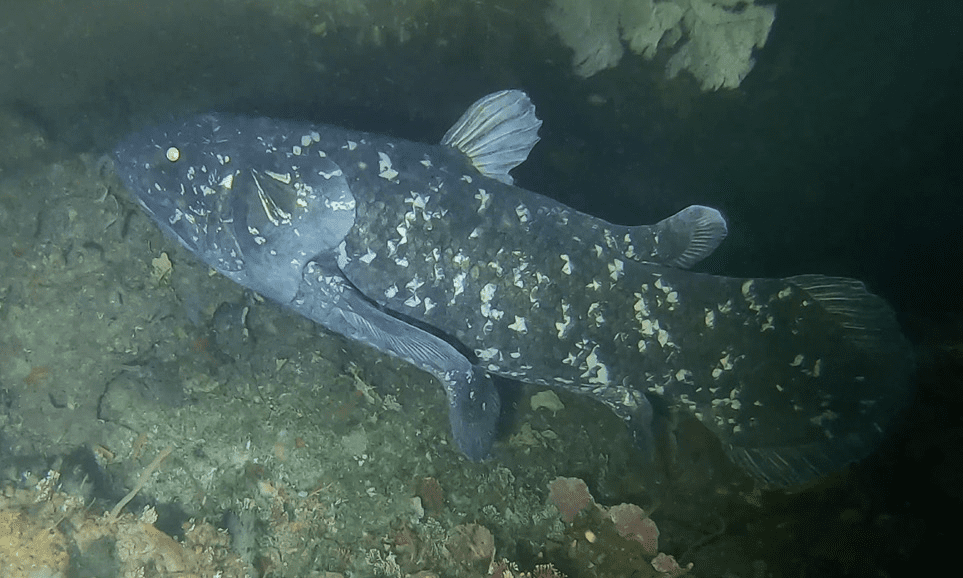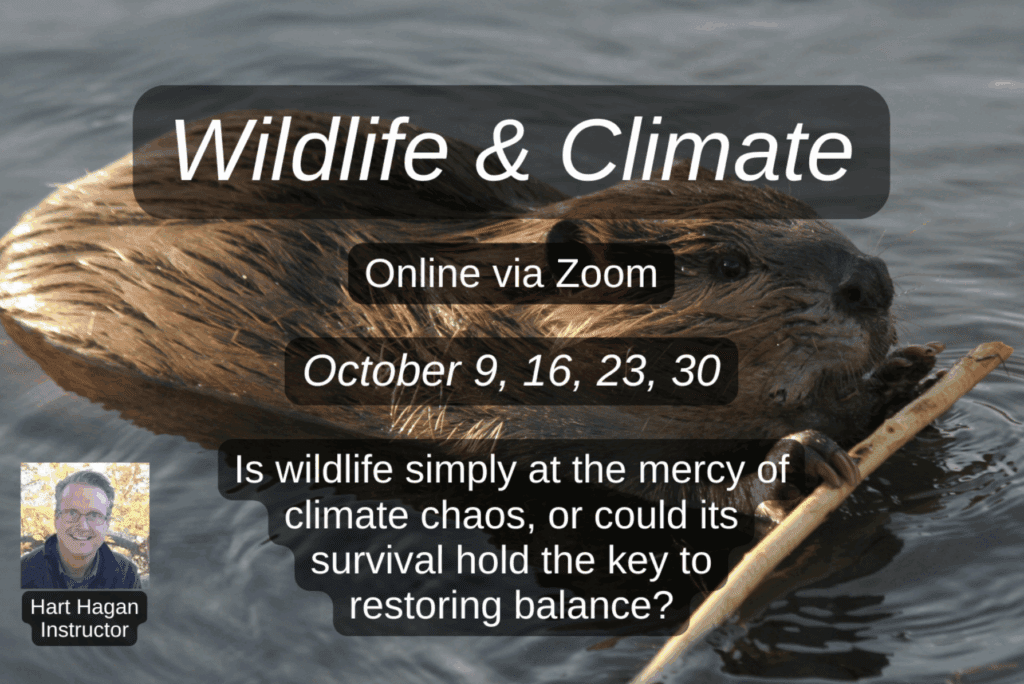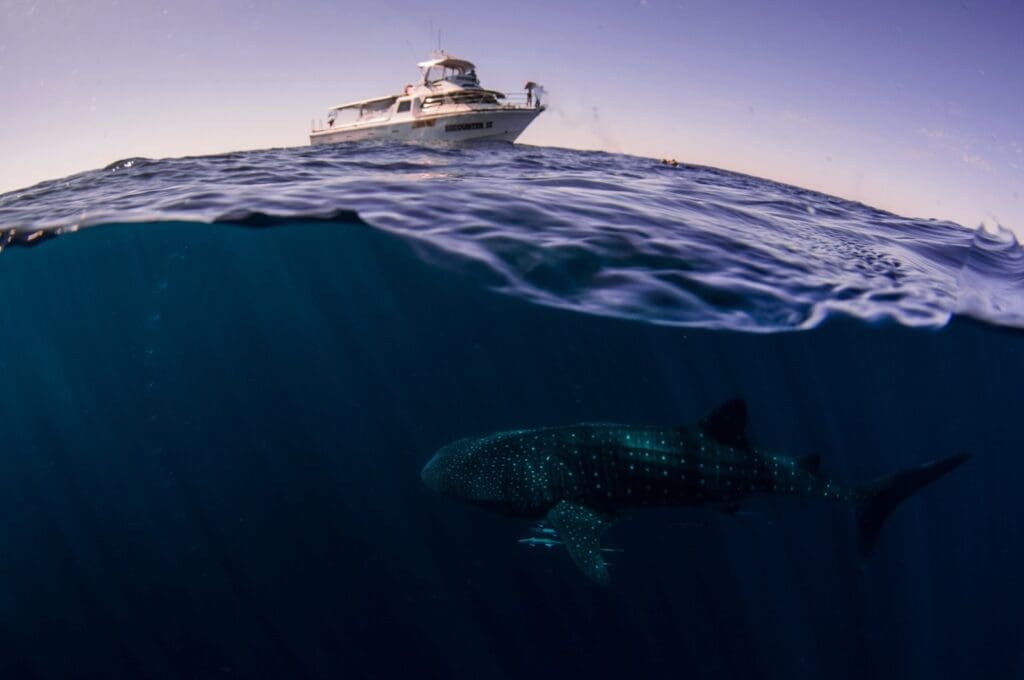What 200-pound nocturnal sea creature, thought to be extinct for millions of years, has one of the longest gestation periods among vertebrates?
The Coelacanth!
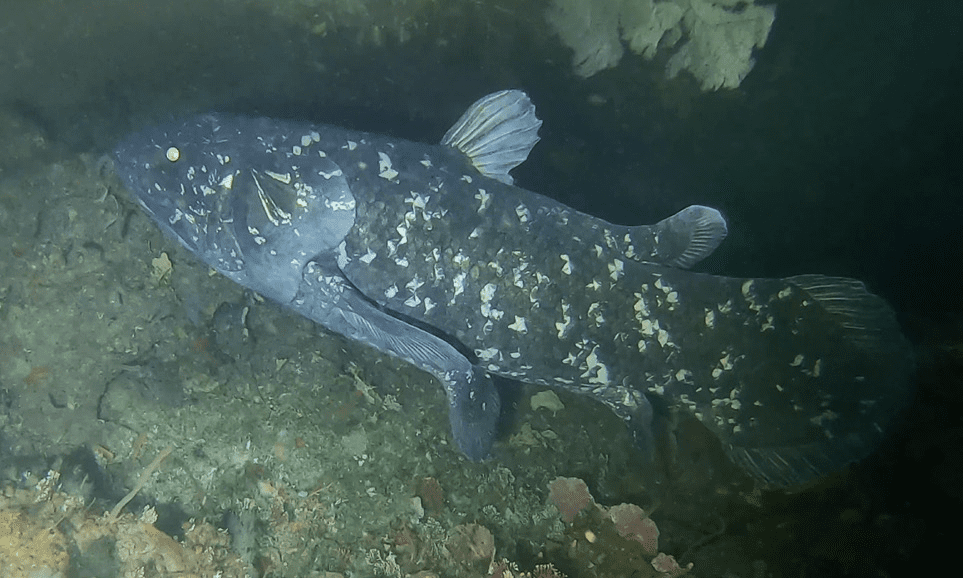
This sea creature was thought to be extinct for 65 million years before it was rediscovered in 1938. Ancient and rare, the coelacanth is a fish so named from its fossil. Scientists knew this fish once existed but never expected to find it alive in the depths of the ocean. The coelacanth (pronounced seel-a-canth) is about 200 pounds and can grow to over 6.5 feet in length. Two species exist today – the Indonesian coelacanth (Latimeria menadoensis) and the African coelacanth (Latimeria chalumnae).
Anatomy
Coelacanth is derived from Latin and means “hollow spine” due to their hollow caudal fin rays. They have thick scales giving them an ancient appearance.These fish lack boney vertebrae. Instead, they have a notochord which is a fluid-filled rod beneath the spinal cord. Coelacanths also use a rostral organ to detect the electrical impulses of nearby prey much like stingrays and sharks. Most distinctive is the coelacanth’s limb-like pectoral fins that appear more like an arm than a fin. The coelacanth has a very unique anatomy. No other fish on Earth possesses these special features.
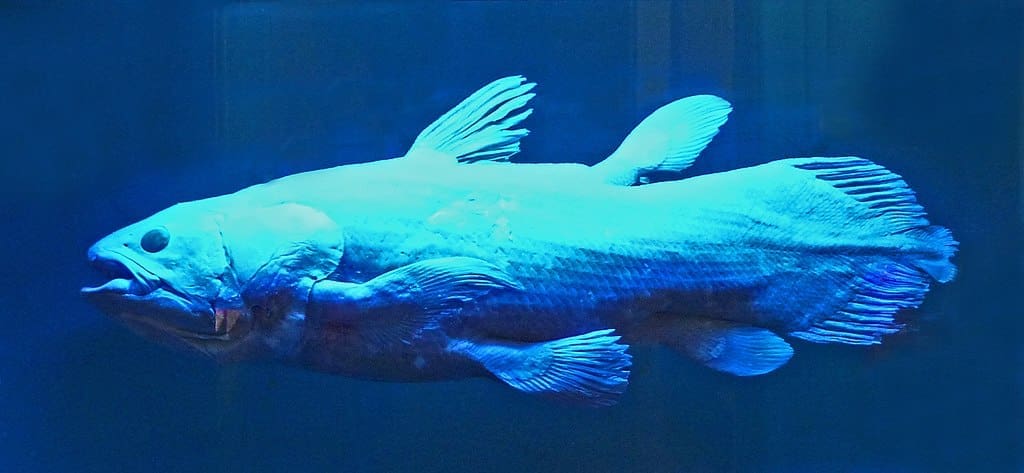
Diet
The next discovery of a live coelacanth came in 1952 – 14 years after the first revelation. But why did it take so long for another fish to be caught? Coelacanths live at great very deep depths, often over 500 feet beneath the surface of the ocean. When they venture into shallower waters, they tend to do so at night. Coelacanths are nocturnal predators.They hide under rock formations and in caves until nightfall when they emerge to hunt other fish, crabs, eels, and squid.They use their hinged skull which enlarges their gape to swallow prey.
Population
The IUCN has listed the coelacanth as critically endangered. It is estimated that only 500 coelacanths exist today. Although not considered an edible fish, as its meat is too oily for consumption, the coelacanth still falls prey to deep-sea fishing nets. If caught as by-catch, coelacanths can die from the stress. These threats can deeply affect the population because coelacanths have an unusually long gestation period of three years – the longest of any vertebrate species. Such factors make coelacanths extremely vulnerable to extinction.

The story of the coelacanth proves there is always more to discover. Biodiversity fosters a sense of curiosity about the endless possibilities of the natural world.
I wonder, if a creature like this still exists, what other species remain unknown to humanity?
Swimming away for now, Joely

Joely Hart is a wildlife enthusiast writing to inspire curiosity about Earth’s creatures. She holds a Bachelor’s degree in creative writing from the University of Central Florida and has a special interest in obscure, lesser-known species.
Sources and Further Reading:
https://a-z-animals.com/animals/mouse-deer-chevrotain
https://www.khaosok.com/national-park/mouse-deer
https://www.ultimateungulate.com/Artiodactyla/Hyemoschus_aquaticus.html
https://factanimal.com/chevrotain/
https://www.npr.org/2019/11/11/778312670/silver-backed-chevrotain-with-fangs-and-hooves-photographed-in-wild-for-first-ti

